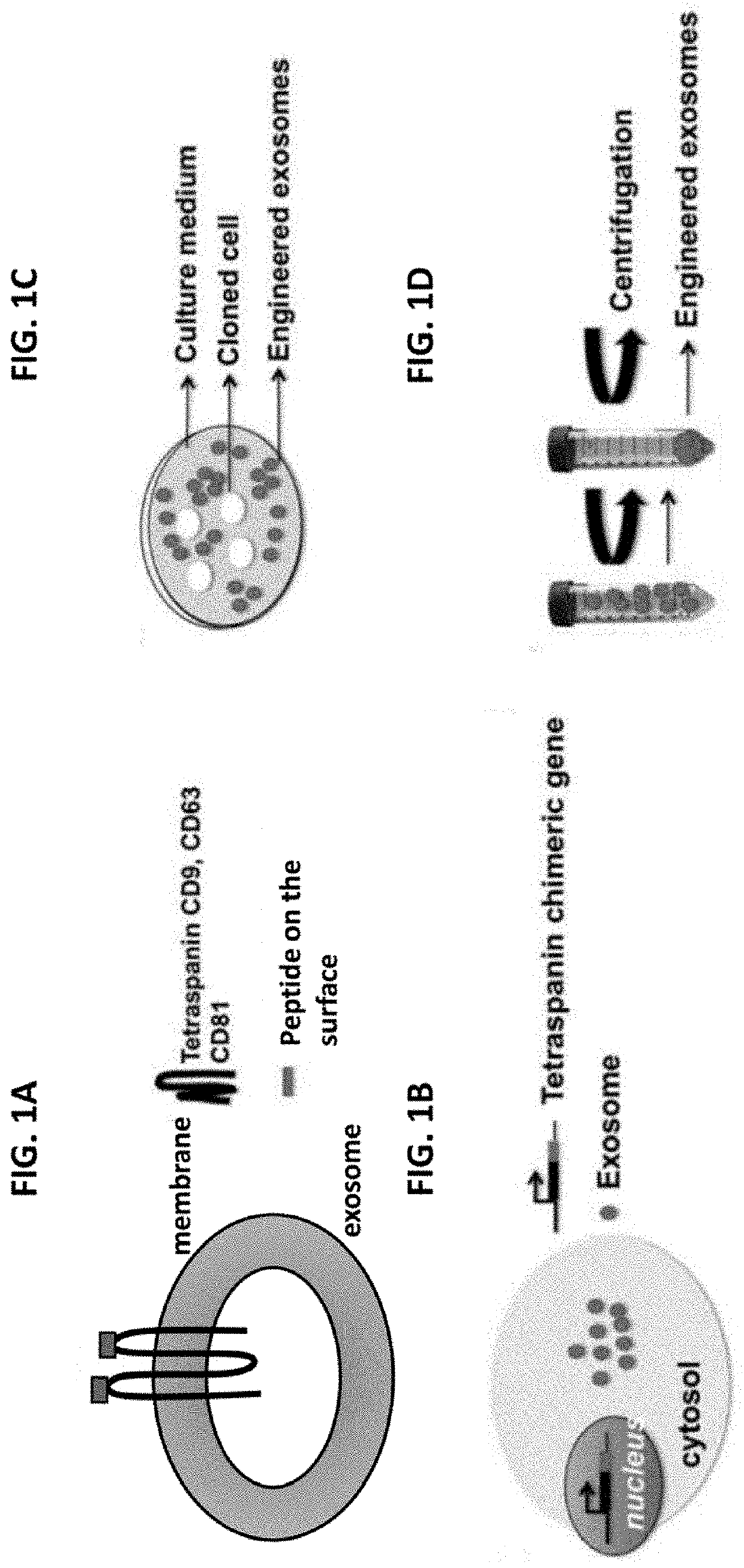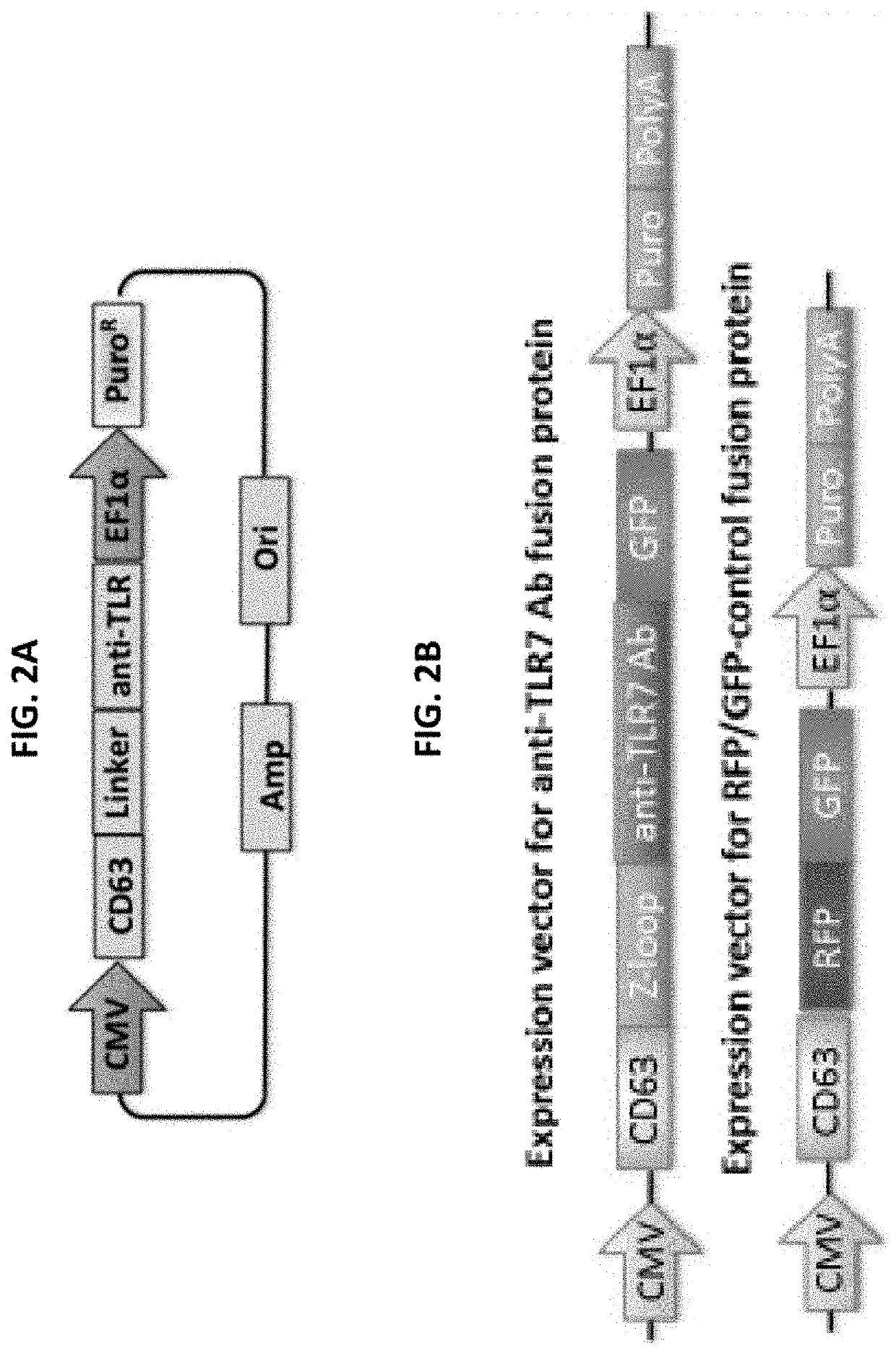Compositions and methods for treating toll-like receptor-driven inflammatory diseases
a technology of toll-like receptors and inflammatory diseases, applied in the field of extracellular vesicle composition, system and method for treating toll-like receptor-driven inflammatory diseases, can solve the problems of limiting the application of disease treatment, imposing a significant burden on family and society, and limited antibody-based therapy efficacy, etc., to achieve the effect of enhancing cytokine storms, reducing side effects, and increasing biocompatibility
- Summary
- Abstract
- Description
- Claims
- Application Information
AI Technical Summary
Benefits of technology
Problems solved by technology
Method used
Image
Examples
example 1
[0187]Genetically modify human cells to produce engineered exosomes that deliver antibodies into endosomes inhibiting endosomal TLR-mediated inflammation.
example 1.1
Exosome-Based Payload Encapsulation and Delivery
[0188]Tetraspanins are scaffold proteins expressed abundantly on the exosome surface. They are relatively small (220-350aa) and are used herein for exosomes display via molecular engineering in mammalian cells. In accordance with the present invention, an Innovative system is provided herein that delivers biologics that have been encapsulated inside engineered exosomes. Fusion protein constructs comprising fluorescent reporters or anti-endosomal-TLRs antibodies fused to the inner surface region of a tetraspanin, such as CD63, are constructed (FIGS. 2A-2B). The system according to the invention delivers large molecule therapeutics to intracellular targets that were previously undruggable by antibody biopharmaceuticals.
[0189]TLR3, 7, 8, and 9 reside in the endosomal membrane and, mediated by the ER membrane protein Unc93B1, the TLRs are transported from the endoplasmic reticulum to endolysosomes. In accordance with the present Invention,...
example 1.2
Screening of Endosomal Anti-TLR Antibodies for Inhibition of Signaling by Intracellular Receptors
[0191]Protein complexes comprising (1) endosomally-trafficked transferrin, (2)streptavidin, (3) biotin-Protein A and (4) a series of anti-TLR antibodies, or TLR-binding fragments thereof (payload) are formed in vitro (FIG. 3). Screening assays using anti-TLR antibodies in protein complexes are used to measure inhibition of pro-inflammatory signaling by TLRs. In the signaling assay, reporter cell lines (including HEK TLR9 NFkB SEAP, HEK TLR8 NFkB SEAP, HEK TLR3 NFkB SEAP and control HEK NFkB SEAP) are pre-treated with protein complexes to promote uptake and trafficking into the endosome where the anti-TLR antibody payload is released to bind endosomal target (TLR receptor). Stimulation with the requisite TLR ligand results in phosphorylation of l1cB dissociating l1cB from NF1cB / l1cB complex resulting in NFkB translocating to the nucleus to induce expression of alkaline phosphatase (SEAP),...
PUM
| Property | Measurement | Unit |
|---|---|---|
| diameter | aaaaa | aaaaa |
| diameter | aaaaa | aaaaa |
| diameter | aaaaa | aaaaa |
Abstract
Description
Claims
Application Information
 Login to View More
Login to View More - R&D
- Intellectual Property
- Life Sciences
- Materials
- Tech Scout
- Unparalleled Data Quality
- Higher Quality Content
- 60% Fewer Hallucinations
Browse by: Latest US Patents, China's latest patents, Technical Efficacy Thesaurus, Application Domain, Technology Topic, Popular Technical Reports.
© 2025 PatSnap. All rights reserved.Legal|Privacy policy|Modern Slavery Act Transparency Statement|Sitemap|About US| Contact US: help@patsnap.com



